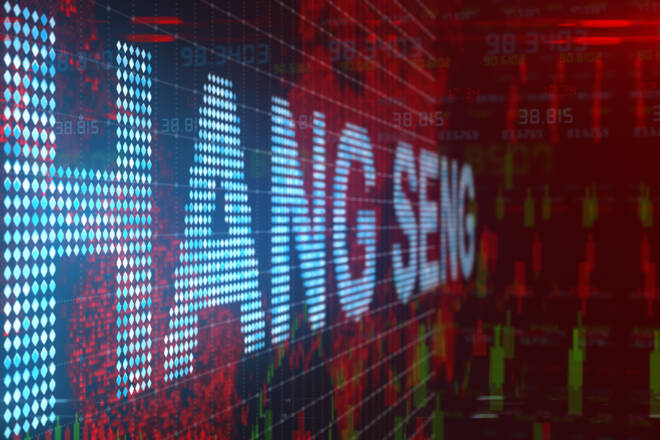Advertisement
Advertisement
Hang Seng Index, ASX200, Nikkei 225: Hang Seng Up Despite China Stats
By:
It was a mixed morning for the Asian markets. The Hang Seng Index was on the move, while the big-4 banks left the ASX 200 in negative territory.
- It was a mixed Thursday morning session, with the Hang Seng Index finding support while the ASX 200 struggled.
- The US banking sector, the Federal Reserve policy decision, and the Fed Chair Powell press conference set the tone.
- This morning, economic indicators from Australia and China sent mixed signals.
Market Overview
It was a mixed Thursday morning session for the Asian markets. The Hang Seng Index found support, while the ASX 200 struggled.
There was a laundry list of factors for investors to consider from the Wednesday US session. Better-than-expected US economic indicators contributed to market uncertainty toward the Fed’s near-term policy plans.
The ISM Non-Manufacturing PMI rose from 51.2 to 51.9 in April versus a forecasted 51.8. Significantly, the ADP reported a 296k increase in nonfarm employment versus a forecasted 148k. Employment rose by 142k in March.
The stats preceded the FOMC Rate Statement and the Fed Chair Powell press conference that delivered mixed signals. While the Rate Statement revealed a willingness to hit the pause button, Fed Chair Powell created uncertainty. The Fed Chair said it was too early to call an end to the monetary policy tightening cycle.
With the US Jobs Report on Friday, numbers aligned with the ADP report would fuel bets of another hike in less than 42 days.
The US banking sector and the failure to raise the debt ceiling were other headwinds.
On Wednesday, the NASDAQ Composite Index fell by 0.46%, with the Dow and S&P 500 seeing losses of 0.80% and 0.70%, respectively. However, the NASDAQ mini was up 50.75 points this morning, with the Dow gaining 23.
Economic data from China failed to spook investors this morning. The all-important China Caixin Manufacturing PMI fell from 50.0 to 49.5. A slide in input and output prices and improved optimism cushioned the impact. However, impressive trade data from Australia failed to move the dial.
ASX 200
The ASX 200 was down 0.21%, with the US banking sector crisis hitting bank stocks. However, Australian trade data and the China Caixin Manufacturing PMI supported mining stocks. In March, the Australian trade surplus widened from A$14.151 billion to A$15.269 billion.
The big-4 had a bearish morning. The National Australia Bank (NAB) slid by 5.60%, with ANZ Group (ANZ) and Westpac Banking Corp (WBC) seeing losses of 2.50% and 3.38%, respectively. The Commonwealth Bank of Australia (CBA) also struggled, falling by 2.04%.
Mining stocks had a bullish morning. Rio Tinto (RIO) and BHP Group Ltd (BHP) rose by 1.95% and 1.62%, respectively, with Fortescue Metals Group (FMG) gaining 1.70%. Newcrest Mining (NCM) was flat.
Oil stocks also found support. Woodside Energy Group (WDS) and Santos Ltd (STO) saw gains of 0.74% and 1.00%, respectively. Brent Crude was up 0.25% to $72.58 this morning.
Hang Seng Index
This morning, the Hang Seng was up 1.02%. Investors brushed aside Fed uncertainty, with the talk of hitting pause good enough for the morning session.
Considering the main components, Tencent Holdings Ltd (HK:0700) and Alibaba Group Holding Ltd (HK:9988) were up by 0.12% and 0.87%, respectively.
It was also a bullish morning session for bank stocks. HSBC Holdings PLC rose by 0.17%, while the Industrial and Commercial Bank of China (HK:1398) and China Construction Bank (HK: 0939) were up 2.16% and 1.75%, respectively. Bank stocks responded to the Hong Kong Monetary Authority (HKMA), raising rates by 25 basis points to 5.50%.
HKME Chief Executive Eddie Yue delivered market assurances that US interest rate hikes would not affect financial and monetary stability in Hong Kong.
CNOOC (HK: 0883) gained 1.75%.
Nikkei 225
The Japanese markets were closed today for Greenery Day. On Tuesday, the Nikkei 225 rose by 0.12%.
Sumitomo Mitsui Financial Group (8316) and Mitsubishi UFJ Financial Group saw losses of 0.62% and 0.77%, respectively.
Considering the main components, Tokyo Electron Limited (8035) and SoftBank Group Corp. (9984) bucked the trend, with gains of 1.48% and 0.14%, respectively.
However, Fast Retailing Co (9983) fell by 0.40%, with Sony Corp (6758) and KDDI Corp (9433) seeing modest losses of 0.08% and 0.07%, respectively.
Check out our economic calendar for today’s economic events.
About the Author
Bob Masonauthor
With over 28 years of experience in the financial industry, Bob has worked with various global rating agencies and multinational banks. Currently he is covering currencies, commodities, alternative asset classes and global equities, focusing mostly on European and Asian markets.
Advertisement
